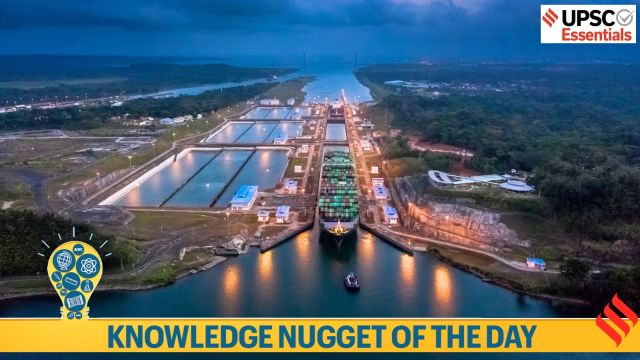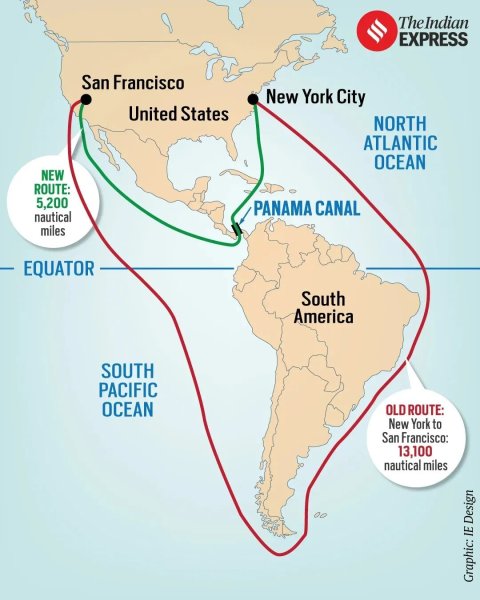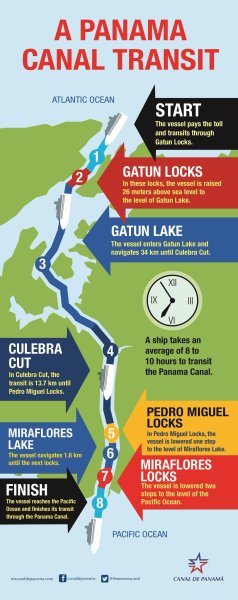Recently, the administrator of the Panama Canal said that the vital waterway will remain under Panamanian control and open to commerce from all countries, rejecting claims made by President-elect Donald Trump that the United States should take over the canal.
1. In an interview with The Associated Press, Ricaurte Vásquez rejected Donald Trump’s claims that China was controlling the operations of the canal. He stated that making exceptions to the current rules governing its operation would result in “chaos.”
2. Earlier, President-elect Donald Trump has referred to the fees for transiting the Panama Canal, which connects the Atlantic and Pacific Oceans, as “ridiculous.” He has even suggested that the U.S. should reclaim control of the canal and has not ruled out the possibility of using military force to achieve this.
3. Completed in 1914, the Panama Canal is one of the two most strategically important artificial waterways in the world, alongside the Suez Canal. For ships traveling between the east and west coasts of the United States, the canal reduces the journey by 8,000 nautical miles, avoiding the dangerous passage around Cape Horn.

4. The Panama Canal is more than just a channel of water that links two larger bodies; it is a complex, highly engineered system that incorporates locks and elevators to transport ships from one end to the other. This design is necessary because the two oceans connected by the canal are not at the same elevation, with the Pacific Ocean being slightly higher than the Atlantic.
Story continues below this ad
5. The Panama Canal needs massive amounts of fresh water to facilitate the passage of ships using this system of locks. Most of this water is supplied from Lake Gatun using the force of gravity (no pumps are needed).
History of Port of Panama
1. The Port of Panama plays a vital role as an international hub for the global movement of goods. In the 16th and 17th centuries, the primary exports included silver, slaves, and textiles. Today, the focus has shifted to oil, vehicles, and industrial products. Central to this trade connectivity is the Panama Canal, which connects the Atlantic and Pacific Oceans through the narrow Isthmus of Panama.
2. The Panama Railroad, built by the USA in the 1850s, paved the way for the Panama Canal but it was the French attempt at building a canal in the 1880s that first disrupted Panama’s close ties to its port.
3. Early in the 20th century, US President Theodore Roosevelt made canal construction a priority. At the time, Panama was part of Colombia, a country facing internal strife. By 1886, Colombia became a centralist government, stripping Panama of its autonomy. Tensions boiled over into The Thousand Days’ War (1899-1902), a bloody civil war in which Panama was a key battleground.
Story continues below this ad
4. The war ended in 1903, and on January 22, the US and Colombia signed the Hay-Herrán Treaty, which granted the US the right to construct the canal. However, Colombia’s Congress rejected the treaty due to concerns regarding sovereignty.
 Route of the Panama Canal. (Source: X/@thepanamaCanal)
Route of the Panama Canal. (Source: X/@thepanamaCanal)
5. Meanwhile, a separatist movement in Panama, backed by the US, declared independence on November 3, 1903. The US and newly independent Panama quickly signed a treaty giving the US control over a 10-mile strip of land for the canal’s construction.
6. In the 1903 treaty, Panama ceded control of the canal zone to the United States, but importantly, the cities of Panama and Colón, along with their ports, were excluded from U.S. control.
7. The canal was completed in 1914, establishing the U.S. as an engineering powerhouse. However, this achievement came at a significant human cost, as thousands of lives were lost during its construction. The project, which began in 1904, ultimately cost $326 million—nearly double the original estimate of $144 million.
Story continues below this ad
 The first ship to ever transit officially the Panama Canal in 1914 was the SS Ancon. The vessel had a total length of 489.5 ft, a 58 ft beam, and 28.9 ft draft. (Source: X/@thepanamaCanal)
The first ship to ever transit officially the Panama Canal in 1914 was the SS Ancon. The vessel had a total length of 489.5 ft, a 58 ft beam, and 28.9 ft draft. (Source: X/@thepanamaCanal)
Why did the United States give away the Panama Canal?
1. Since the canal opened, control over it has been a point of contention between Panama and the United States, highlighted by riots in the canal zone in 1964. Several attempts at negotiation were made, but they were largely unsuccessful.
2. In the 1970s, presidential candidate Jimmy Carter initially opposed a treaty regarding the canal. However, after winning the election in 1976, his stance changed.
3. The following year, the Torrijos-Carter Treaties were signed, which granted the USA the authority to militarily defend the Panama Canal against any threats to its neutrality. Additionally, the Panama Canal Zone was set to cease to exist on October 1, 1979, with the canal itself scheduled to be turned over to the Panamanians on December 31, 1999.
BEYOND THE NUGGET: Suez Canal
1. The Suez Canal is a 193-km artificial waterway that connects the Red Sea to the Mediterranean through the Isthmus of Suez.
Story continues below this ad
2. Officially opened to ships on November 17, 1869, Suez Canal cut down the sea route from Asia to Europe by up to 7,000 km by negating the need for ships to travel around the southern tip of Africa to traverse between the Indian and Atlantic Oceans. Today it is one of the world’s busiest waterways, handling roughly 12 per cent of global commerce.

3. The canal also has its issues. Such as, the 193 km-long, 205 m-wide, and 24 m-deep Suez Canal is the world’s biggest shipping bottleneck. Despite being widened and deepened over the years, it remains perennially congested, with long queues at either end. In March 2021, the mammoth cargo ship Ever Given got stuck in the canal, blocking passage for more than a week.
4. The Suez Canal was also the focal point of both the 1967 and 1973 Arab-Israeli wars, and was shut from 1967-75.
5. The canal is, of course, critical to Egypt’s economy. It collects all the toll revenue generated, in addition to the benefits it brings to its local economy.
Story continues below this ad
(Sources: Panama Canal administrator pushes back against Trump’s assertions, Trump threatens to ‘demand the return’ of Panama Canal, Panama Canal,Existential threat to Panama Canal, An alternative to the Suez Canal)
🚨New Year Special: Click Here to read the January 2025 issue of the UPSC Essentials monthly magazine. Share your views and suggestions in the comment box or at manas.srivastava@indianexpress.com🚨
Subscribe to our UPSC newsletter and stay updated with the news cues from the past week.
Stay updated with the latest UPSC articles by joining our Telegram channel – Indian Express UPSC Hub, and follow us on Instagram and X.
Story continues below this ad




 Route of the Panama Canal. (Source: X/@thepanamaCanal)
Route of the Panama Canal. (Source: X/@thepanamaCanal) The first ship to ever transit officially the Panama Canal in 1914 was the SS Ancon. The vessel had a total length of 489.5 ft, a 58 ft beam, and 28.9 ft draft. (Source: X/@thepanamaCanal)
The first ship to ever transit officially the Panama Canal in 1914 was the SS Ancon. The vessel had a total length of 489.5 ft, a 58 ft beam, and 28.9 ft draft. (Source: X/@thepanamaCanal)































